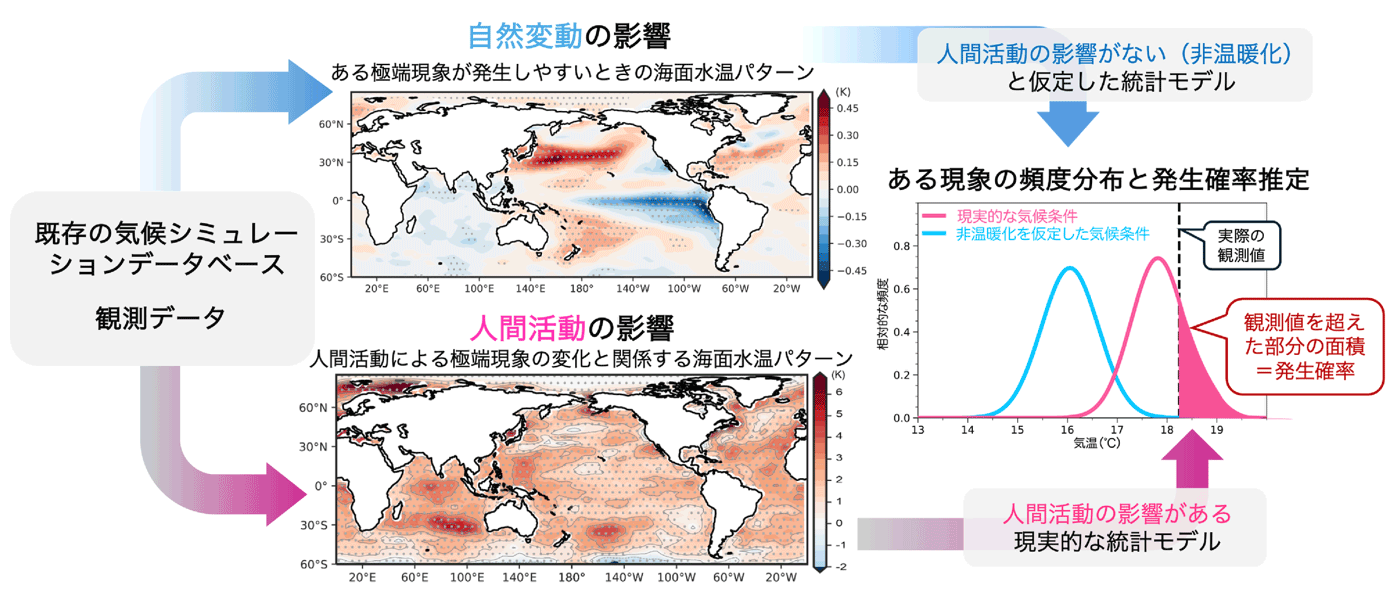2025-07-10 東京大学,気象研究所,(一財)気象業務支援センター,京都大学

新しい統計的手法に基づく迅速なイベント・アトリビューションの模式図
海面水温パターンは一例であり、イベントにより異なります。
<関連情報>
- https://www.aori.u-tokyo.ac.jp/research/news/2025/20250710.html
- https://www.aori.u-tokyo.ac.jp/research/news/2025/files/20250710_summary.pdf
- https://iopscience.iop.org/article/10.1088/2752-5295/ade1f3
極端事象の発生確率に対する迅速な事象帰属の新しい統計的手法:日本の熱波事象への応用 A new statistical method of rapid event attribution for probability of extreme events: applications to heatwave events in Japan
Chiharu Takahashi, Yukiko Imada, Hiroaki Kawase and Tomohiro Tanaka
Environmental Research: Climate Published: 10 July 2025
DOI:10.1088/2752-5295/ade1f3
Abstract
We have developed a new statistical method of rapid event attribution (EA) that can immediately estimate the probability of a specific extreme event and attribute it to long-term climate change including anthropogenic global warming by using existing long-term large ensemble (LE) climate simulations with an atmospheric general circulation model and observational data. This paper describes the new EA method with the example of summer heat waves that have occurred in Japan. The probability distribution functions of the temperature over Japan are well approximated with the Gaussian (Gauss) distribution or the generalized extreme value distribution. We propose the new methodology to estimate parameters of a distribution function as a function of global sea surface temperature (SST) anomalies or equivalent atmospheric variables under factual climate conditions and counterfactual non-warming climate conditions using a regression model, which enables us to incorporate the influence of underlying oceanic natural variability into the EA system. The key points of our method are that (1) it is based on findings that the location, scale, and shape parameters of the probability density function of temperature in Japan are closely linked to the primary modes of internal variability in the atmosphere and ocean, (2) changes in these parameters induced by the anthropogenic climate change can also be reconstructed from the trend patterns of the SST and (3) considering atmospheric forced responses to SST variations in the statistical relationship improves the estimation accuracy. We confirmed that this approach can successfully estimate the probability of several past extreme temperature events in Japan under the factual and counterfactual climate conditions which is comparable to the estimation of conventional LE method. This new rapid EA method will be applicable to other types of extreme events and to events all over the world.



